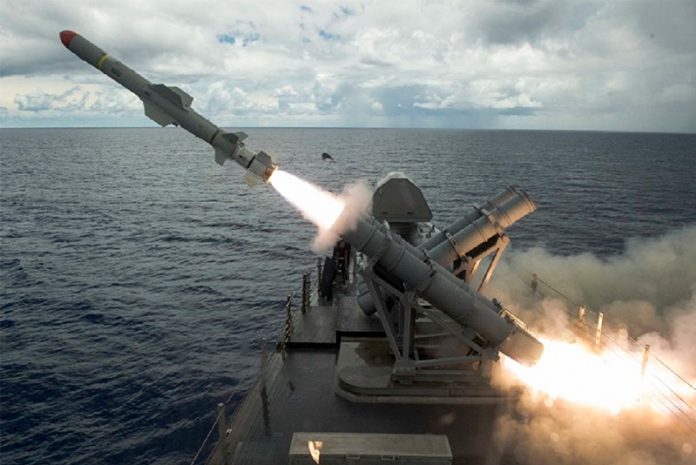The Royal Thai Navy (RTN) is set to receive eight new Harpoon Block II anti-ship missiles (ASMs) following the award of a $657 million Foreign Military Sales (FMS) contract modification to Boeing announced on 13 May.
Contract
According to the US Defense Security Cooperation Agency (DSCA), the contract modification covers the acquisition of 467 full rate production Lot 91 Harpoon Block II missiles and support equipment for several FMS customers. The bulk of the work will be performed at Boeing’s facilities in St Louis, Missouri, and McKinney, Texas, and is expected to be completed by 2026.
The eight missiles will likely be destined for the RTN’s second Krabi-class patrol vessel – HTMS Prachuap Khiri Khan (552) – which was commissioned at Sattahip, Chonburi, on 27 September 2019.
Krabi-class OPVs
Built by Bangkok Dock, Prachuap Khiri Khan is the second of two Krabi-class vessels that is derived from BAE Systems’ successful Offshore Patrol Vessel (OPV) design, which has also been adopted by the Brazilian Navy as the Amazonas-class and the UK Royal Navy as the River-class OPVs.
First-of-class HTMS Krabi (551) was commissioned in August 2013.
The Krabi-class OPVs are 295 feet (90 metres) long with an overall beam of 44 ft (13.5m). The vessels can reach a maximum speed of 25 knots and operate out to 3,500 nautical miles when cruising at 15kts.
The vessels are armed with an Oto Melara 76/62mm Super Rapid naval gun on its foredeck, two MSI 30mm gun mounts, as well as two M2 12.7mm heavy machine guns.
Harpoon Block II ASMs
HTMS Prachuap Khiri Khan has also been equipped with a pair of twin launchers for the Harpoon Block II ASMs, although these are absent on Krabi.
Other RTN ships armed with the Harpoon Block II ASMs include the service’s new Bhumibol Adulyadej-class guided missile frigates built by South Korean shipyard DSME based on its DW3000 design.
Besides Thailand, the FMS contract modification will also benefit the navies of Brazil (4), Qatar (53), Saudi Arabia (402), and also provide support for existing users such as Japan, the Netherlands, India, and South Korea.
The Harpoon Block II features improved guidance systems, which expands its engagement envelope to 67nm and makes it less vulnerable to electronic countermeasures.
by Jr Ng













